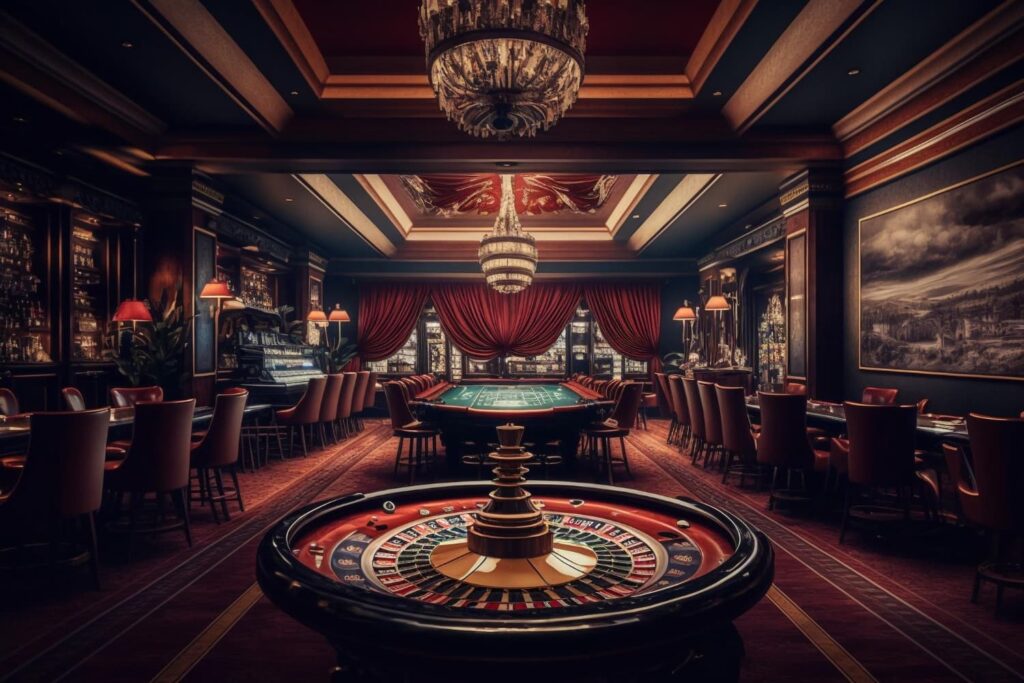
The Fascinating Tale of Slot Machines
The tale of gaming machines is a mesmerizing adventure that reflects the development of entertainment and wagering over the ages. From their humble beginnings in the 1890s to becoming a staple in gaming halls throughout the globe, these games of chance have experienced remarkable changes. Slot machines have captivated players with their vibrant visuals, engaging storylines, and the potential of transformative jackpots.
Originally made as physical devices with rotating cylinders and few images, slot machines have evolved into cutting-edge digital games that include innovative features and interactive components. Currently, they welcome millions of players, each hoping to hit the jackpot with just the yank of a lever or the touch of a button. Exploring the intriguing background of these machines discloses not just the tale of a beloved pastime, but also a reflection of cultural shifts and tech developments over the decades.
One of the Birth of Slot Machines' History

A tale of slot machines originates in the late 19th century, a time when machines were becoming popular in entertainment venues. A groundbreaking slot machine was invented by Charles Fey in 1895, referred to as the Liberty Bell. It featured three spinning reels and 5 symbols: hearts, diamonds, spades, a horseshoe, and the famous Liberty Bell. Players pulled a lever to spin the reels, and if the symbols aligned in a specific combination, players won a payout. Fey's invention rapidly captured the attention of gamblers and paved the way for future developments in casino slots games.
As the idea of the slot machine gained popularity, various inventors looked to enhance Fey's design. By the dawn of the 1900s, slot machines were becoming a frequent presence in saloons and amusement parks. In 1907, the first electromechanical slot machine was created by Herbert Mills, featuring a more intricate system of payout mechanisms and the renowned fruit symbols that are still linked to slots today. This evolution marked a major shift in the gaming industry, as machines became more engaging and user-friendly, drawing in more players.
The popularity of slot machines remained high throughout the first half of the 20th century, resulting in their widespread adoption in casinos across the United States. However, the rise of legal restrictions on gambling during the Great Depression posed challenges for the industry. Many machines were outlawed, but this did not halt innovators. Instead, they adjusted by creating machines that gave out candy or gum instead of cash prizes, effectively bypassing the restrictions while still offering the thrill of a casino slots game. This creativity kept the spirit of gambling alive, setting the stage for the eventual resurgence of slot machines in modern casinos.
Advancement of Slot Machine Innovation
The story of gambling machines started in the final 19th century with the invention of the early mechanical machines. Charles Fey, a San Francisco engineer, introduced the Liberty Bell slot machine in 1895, which featured three spinning reels and five symbols: heart shapes, diamond shapes, spade symbols, a horseshoe, and the bell symbol itself. This basic yet enthralling appearance laid the groundwork for the future of slot games, creating an instant appeal for gamblers seeking fun and a shot to win.
As technology matured, so did the styling and operations of gambling devices. By the middle 20th era, electronic mechanical machines surfaced, including electrical components to enhance gameplay and boost payout chances. These advancements allowed for greater complexity features like multiple paylines and larger jackpots. The gaming establishments welcomed these advances, causing the emergence of casino slots as a major provider of profits within the gambling sector, fundamentally transforming the experience of playing slots.
The closing 20th and early 21st centuries introduced the digital revolution, leading to the debut of video slots. These gaming units substituted traditional reels with monitors, allowing even more creativity in themes and gameplay features. Gamblers could now experience rich graphics and sound effects, along with interactive bonus rounds. The shift to internet gambling further revolutionized the casino slots game, making slots accessible to a global audience at any time and wherever, thus marking a fresh chapter in the progression of gaming machine technology.
The Cultural Impact of Gaming Machines
These gaming machines have become not only a means of entertainment; they have integrated into the essence of mainstream culture. From movies and television shows to music and literature, these iconic gaming machines often serve as emblems of chance and risk. Films like The Casino and Ocean's 11 prominently feature slots, depicting them as exciting yet unpredictable elements of the casino atmosphere. Their unique attraction lies in the sound of coins falling, the revolving reels, and the vibrant blinking lights, which together create an exhilarating atmosphere that captures attention.
Moreover, slot machines have influenced social gatherings and events, making them a focal point in casinos and gaming venues. Many people do not just visit a casino to gamble; they go for the entire experience, which encompasses the social interactions and the lively ambiance surrounding these machines. Special tournaments and themed gaming nights centered around slots also showcase their popularity, fostering social connections and shared experiences among players. This community aspect has contributed to the machines' lasting popularity.
The advancement of technology has further changed this cultural impact. Digital and online slots have expanded access to these games far beyond the walls of physical casinos. tải app gk88 Players can now get their favorite casino slots game from home or on the move, leading to the rise of virtual forums and discussion boards where enthusiasts exchange strategies and experiences. The continuous innovation in game design and the inclusion of storytelling have kept the cultural significance of slot machines alive, attracting younger audiences while maintaining a tie to their historical roots.